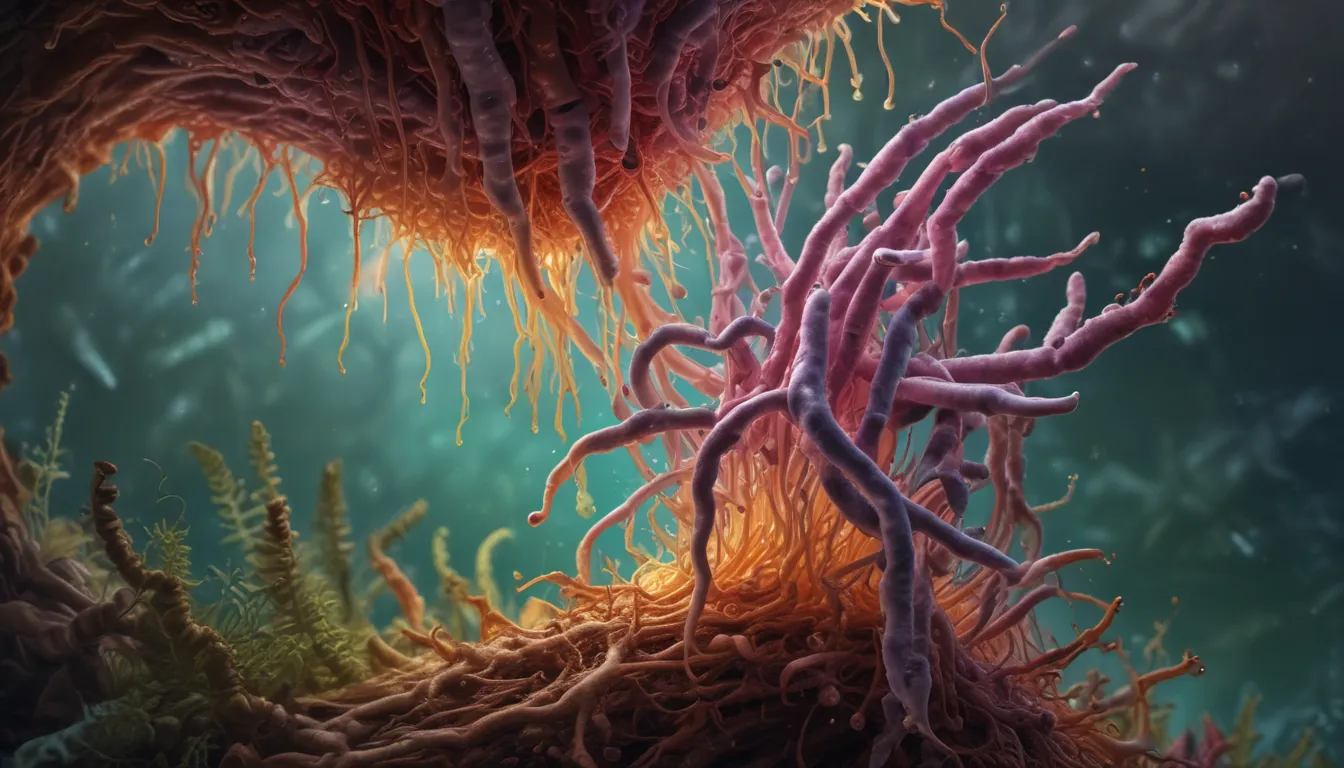A Note About Images: The images used in our articles are for illustration purposes only and may not exactly match the content. They are meant to engage readers, but the text should be relied upon for accurate information.
Clostridium perfringens, a versatile bacterium found in various environmental sources, has a significant impact on both human health and industrial applications. With its unique characteristics and diverse roles in causing foodborne illnesses, as well as its potential in biotechnology and bioremediation, this microorganism has captured the attention of scientists and researchers worldwide.
Unraveling the Enigma of Clostridium Perfringens
Let’s embark on a fascinating journey to discover 20 intriguing facts about Clostridium perfringens, shedding light on its biology, ecology, and the wide-ranging implications of its presence in different settings. From its historical significance to its modern-day relevance in food safety and beyond, we will explore the multifaceted nature of this bacterium to gain a deeper understanding of its complexities and profound impact on various aspects of our lives.
Key Takeaways:
- Clostridium perfringens is a versatile bacterium found in soil, sewage, and intestines, causing food poisoning and gas gangrene. Its rapid growth and spore-forming ability make it a significant public health concern.
- This bacterium has historical significance, industrial applications, and veterinary implications. Its role in foodborne illness and potential for bioremediation highlight the need for understanding and controlling its behavior.
Clostridium Perfringens: A Ubiquitous Presence in Nature
Clostridium perfringens can be found in various environments, including soil, sewage, and the human and animal intestines. Its widespread presence underscores its adaptability and resilience in diverse ecological settings.
Historical Significance: From Discovery to Modern-Day Research
This bacterium was first isolated and described by an Austrian surgeon, Theodor Billroth, in 1877. Since then, it has been a subject of extensive scientific research, contributing to our understanding of microbial pathogenesis and ecological interactions.
The Prevalent Culprit in Foodborne Illnesses
Clostridium perfringens is one of the most common causes of food poisoning globally, often linked to improperly handled or stored meats and gravies. Its ability to thrive in food sources highlights the importance of safe food handling practices.
The Phenomenon of Rapid Growth
Under optimal conditions, Clostridium perfringens can exhibit rapid growth, with a generation time as short as 6.3 minutes. This remarkable growth rate contributes to its ability to colonize and proliferate in various environments.
Mastering the Art of Spore Formation
Clostridium perfringens possesses the extraordinary ability to form spores, enabling it to survive in harsh conditions such as high temperatures and low-oxygen environments. This spore-forming capability enhances its resilience and longevity in challenging habitats.
Unveiling the Horrors of Gas Gangrene
Notorious for causing gas gangrene, Clostridium perfringens can trigger a severe and potentially life-threatening condition characterized by the production of gas within body tissues. Understanding its pathogenic mechanisms is crucial for developing effective treatment strategies.
Implications in Necrotizing Enteritis and Wound Infections
Clostridium perfringens is implicated in necrotizing enteritis, a condition marked by inflammation and tissue death in the intestines. Additionally, it is a common culprit in wound infections, particularly in traumatic injuries and surgical wounds.
The Arsenal of Clostridium Perfringens Toxins
Producing several toxins, including alpha toxin, Clostridium perfringens plays a key role in the pathogenesis of gas gangrene and other infections. The diverse toxins it produces contribute to its virulence and pathogenicity.
Unveiling its Role in Industrial Applications
During World War I, Clostridium perfringens was harnessed for industrial processes, such as the production of acetone and butanol. Its versatile nature extends beyond its pathogenicity to beneficial applications in industrial settings.
From Gas Production to Bioremediation
In addition to gas gangrene, Clostridium perfringens is involved in gas production in tissue infections and canned food spoilage. Moreover, certain strains of this bacterium have been explored for their potential in bioremediation, offering promising solutions for environmental pollution.
The Veterinary Realm: Implications and Challenges
Clostridium perfringens can cause enterotoxemia in animals, leading to significant economic losses in the livestock industry. Recognizing its role in animal diseases and implementing preventive measures are essential in veterinary medicine.
The Era of Antibiotic-Associated Diarrhea
Linked to antibiotic-associated diarrhea, particularly following the administration of broad-spectrum antibiotics, Clostridium perfringens raises concerns about the impact of antibiotic use on gut microbiota and related infections.
Exploring its Prevalence in Gut Microbiota
A common member of the gut microbiota in humans and animals, Clostridium perfringens plays a vital role in the fermentation of carbohydrates. Its presence highlights its symbiotic relationship with the host and its contribution to gut health.
The Telltale Sign of Environmental Contamination
Detection of Clostridium perfringens in environmental samples serves as an indicator of fecal contamination and potential health risks. Monitoring its presence in environmental settings is crucial for assessing public health risks.
From Fermented Foods to Public Health Implications
Clostridium perfringens can contribute to gas production in certain fermented foods, impacting their quality and safety. Its association with foodborne illnesses underscores the importance of stringent food handling practices and hygiene measures in food production.
The Crucial Role in Medical Research
A focal point of extensive research, Clostridium perfringens contributes to advancing our knowledge of microbial pathogenesis and host-microbe interactions. Its study in medical research has yielded valuable insights into infectious diseases and treatment options.
Embracing a Future of Possibilities: Bioremediation and Beyond
As research continues to unfold the mysteries of Clostridium perfringens, its potential in bioremediation and environmental sustainability emerges as a promising frontier. Exploring the beneficial applications of this bacterium opens new avenues for addressing environmental challenges.
Journeying Through the Realms of Science and Medicine
With its diverse roles in food safety, veterinary medicine, and environmental applications, Clostridium perfringens remains a captivating subject of study for researchers and professionals across various disciplines. Its profound impact on public health and industrial processes underscores the importance of understanding its behavior and implementing effective control measures.
In the Realm of Microbial Wonders: The Unraveling of Clostridium Perfringens
In conclusion, Clostridium perfringens stands as a captivating bacterium with a significant influence on various facets of human life, from food safety to medical research. Its ability to form spores and produce toxins makes it an intriguing subject for microbiological exploration and public health vigilance. By unraveling the complexities of Clostridium perfringens, we pave the way for preventive strategies and innovative solutions in the realm of microbial mysteries.
Exploring the Boundless World of Clostridium Perfringens: FAQs
-
What are the common sources of Clostridium perfringens infections?
Clostridium perfringens infections are commonly associated with undercooked meats, gravies, and stews, as well as foods that have been kept at improper temperatures for extended periods. -
How can Clostridium perfringens foodborne illnesses be prevented?
To prevent Clostridium perfringens foodborne illnesses, it is crucial to cook foods thoroughly, maintain proper food storage temperatures, and avoid leaving cooked foods at room temperature for an extended period. Additionally, practicing good hygiene and sanitation in food preparation and handling can significantly reduce the risk of contamination.
Embracing a Community of Curiosity and Learning
Our commitment to providing trustworthy and engaging content drives our pursuit of knowledge and exploration. Each fact shared on our platform is contributed by individuals like you, offering a diverse range of insights and information. With a dedication to upholding the highest standards of accuracy and credibility, our team of editors meticulously reviews each submission to ensure that the facts we deliver are not only intriguing but also credible. Trust in our mission to deliver quality and authenticity as we embark on a shared journey of discovery and learning.
As we navigate the intricate world of Clostridium perfringens, let us embrace the wonders of science, the mysteries of nature, and the boundless opportunities for growth and understanding. Together, we illuminate the path to discovery and unveil the hidden treasures of the microbial realm.






